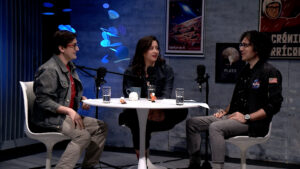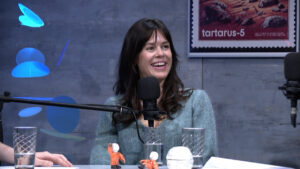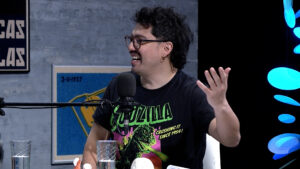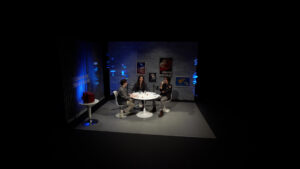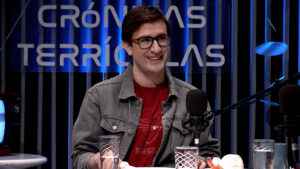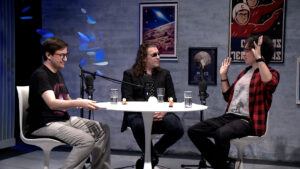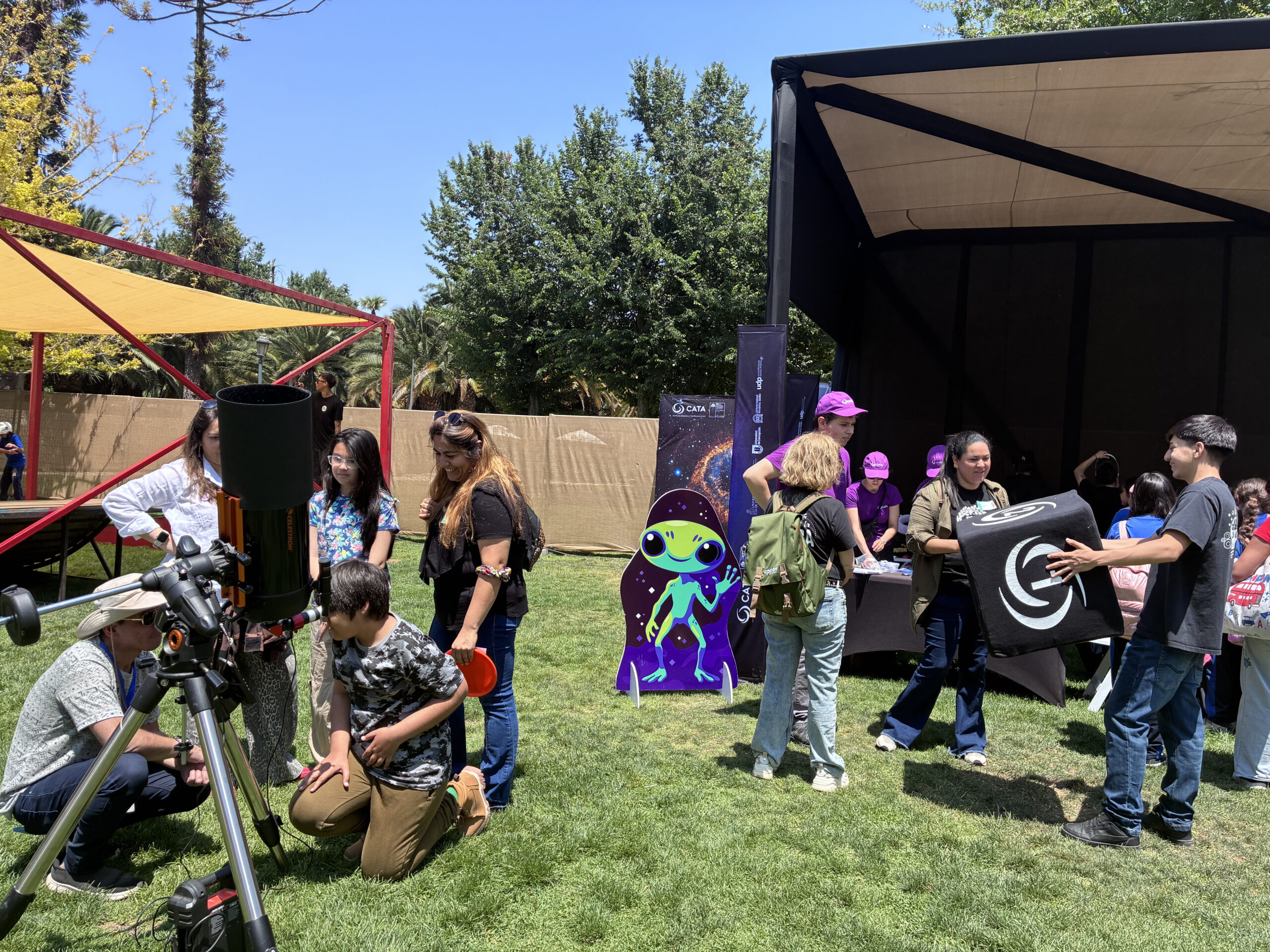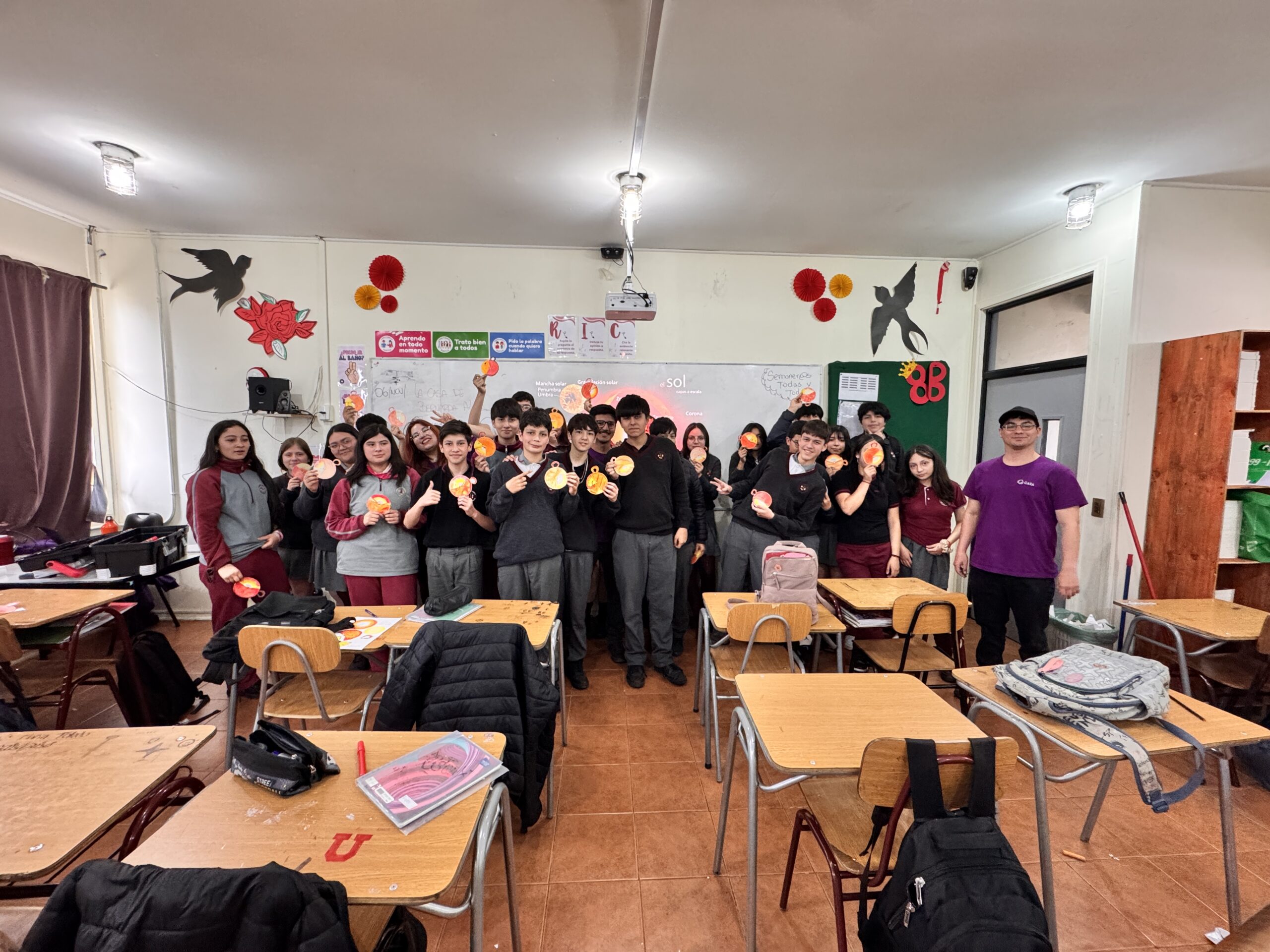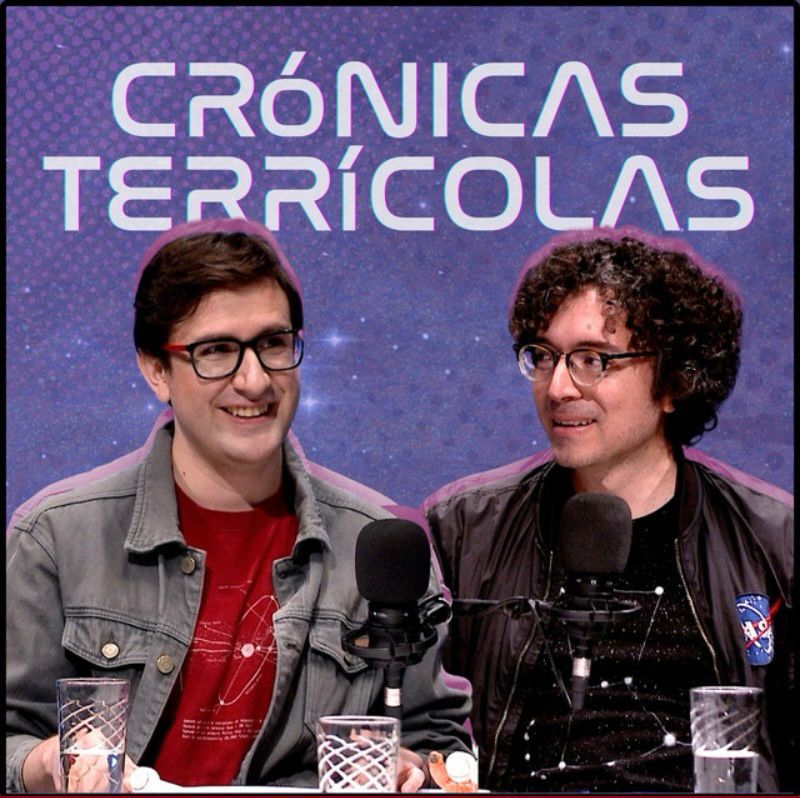
New program between CATA and Media UC to explore the mysteries of the Universe with great guests
In collaboration with Media UC, the Center for Astrophysics and Related Technologies (CATA), premiered its new program “Crónicas Terrícolas” on channel 13C, an innovative video podcast that invites the audience to dive into the most curious anecdotes of the history of astronomy and to explore the most exciting challenges of the Universe.
With a fresh and close format, “Crónicas Terrícolas” proposes a relaxed and playful conversation that seeks to bring science closer to all audiences. Each episode takes place in a minimalist scenography that evokes a space capsule, where the most curious stories, surprising facts and reflections that will make you see the cosmos with new eyes will be shared.
The program is hosted by José Utreras, PhD in Astronomy and CATA ‘s Outreach and Content Coordinator, accompanied by Robbie Barrera, known as “El Profe Robbie”, physics professor and popularizer, whose agile and sparkling conversation connects science with pop culture. Each episode features a special guest from the world of music, art, theater, journalism or sports, who represents the audience with their questions, reactions and anecdotes.
Each episode follows a clear and engaging structure: it begins with basic questions about the central topic, ideal for those approaching the world of astronomy for the first time; then the conversation moves on to more complex and fascinating aspects; and finally, it looks to the future, exploring how science will continue to transform our understanding of the universe.
A collaboration of CATA and Media UC
The creation of “Crónicas Terrícolas” is the result of a strategic collaboration between our Center and Media UC, an alliance that unites scientific rigor with audiovisual creativity. This synergy has allowed us to develop a project that not only communicates science, but does so with depth, sensitivity and a language accessible to all audiences.
CATA, as one of the most important astronomical research centers in Latin America, provides specialized knowledge, scientific validation of content and access to researchers and cutting-edge data. For its part, Media UC offers its experience in audiovisual production, transmedia narrative and cultural dissemination, generating an innovative product that combines technical quality with an attractive aesthetic and communicational proposal.
In this context, Patricia Tissera, Director of CATA, emphasizes the role of the center as a facilitator of the conversation around science, and highlights the importance of spaces such as “Crónicas Terrícolas”. “CATA’s participation in the project represents a strategic opportunity to strengthen its role as a key player in the dissemination of astronomy in Chile. This collaboration with Media UC offers an opportunity to connect with wider audiences through a close and inclusive language,” he says. “This format positions us as a center of excellence committed to the public communication of science, able to innovate in the way of telling the universe from Chile, contributing from knowledge, creativity and collaboration. In a context where the social appropriation of science is key for the development of the country, initiatives such as Crónicas Terrícolas are essential to strengthen the link between science and citizenship”, he adds.
“Projects like ”Crónicas Terrícolas” are fundamental because they play a key role in the democratization of scientific knowledge. In a world where science and technology increasingly influence our decisions, it is essential that this knowledge is available to everyone,” says Rodrigo Moreno Del Canto, Director of Media UC. “This type of initiative achieves something very valuable: translating complex concepts into accessible, entertaining and relevant conversations. By incorporating voices from art, sports, journalism and humor, “Crónicas Terrícolas” breaks with the idea that science is cold or distant, and presents it as part of our daily lives, connected to our own questions and experiences,” he concludes.
This collaboration has not only given life to a unique program of its kind, but also lays the groundwork for future joint initiatives that bring science closer to the public, from an interdisciplinary, inclusive and deeply human point of view. In this sense, “Crónicas Terrícolas” is an example of how the Center can be a bridge between knowledge and society.
Guests connecting science to everyday life
One of the hallmarks of the program is the participation of guests from different worlds -art, sports, music, journalism, social networks- who represent the audience. Each conversation thus becomes a bridge between science and everyday life.
“Each guest brings us something different, some a very innocent curiosity, others complemented with their knowledge, many were amazed or brought their energy and sense of humor. I had the opportunity to learn from several of our guests before and during the recordings as we talked about their talents and about science,” says José Utreras, host of the show and CATA’s discloser.
On the diversity of panelists invited to “Crónicas Terrícolas”, Utreras emphasized the ease of connecting through the curious stories linked to the world of astronomy. “It was very challenging to get to talk about astronomy with such different people, each with their own interests, some far removed from science. But through the weird things that happen in space and that have happened in history we managed to connect. It was entertaining and it was quite calm because there was a team behind us that was attentive to everything and also a great partner like Robbie, who gave a spark to every conversation”, he concluded.
In the first episode, comedian Luis Slimming immersed himself in the mysteries of the Moon. Together with the hosts, he explored the main characteristics of the only natural satellite of our planet, such as its origin and composition. He also discussed the Apollo missions and their impact on society, as well as the tides and the future of lunar exploration. Slimming’s humor brought a fresh look at a celestial body that we all see, but few of us understand in depth.
The second chapter will feature discus athlete Lucas Nervi, who will address the topic of the messages humanity has sent into space. From the golden disc of the Voyager probes to the radio messages addressed to possible extraterrestrial civilizations, the conversation will revolve around what we say about ourselves when we speak to the cosmos, and what this reveals about our culture, our fears and our hopes.
In the episode dedicated to the sun, comedian Paloma Salas will bring her keen eye and characteristic humor to explore the most important star for our existence. The conversation will begin with basic questions, such as what the sun really is, how its energy works and why it is so important for life on Earth. In addition, topics such as solar storms and their impact on human communications and technologies will be explored. Paloma, with her direct and curious style, will raise questions that many share, but few dare to ask.
Actress María José Bello will come to the studios of “Crónicas Terrícolas” to talk about cometsWe will discuss their historical appearances, their impact on popular culture and their scientific importance as time capsules of the early solar system. Myths, superstitions and the fascination that these wandering bodies have generated over the centuries will also be addressed.
Influencer Javier Manríquez, known for his content on social networks, will participate in a chapter dedicated to extraterrestrial life. The conversation will range from the conditions necessary for life on other planets to the possibilities of its existence, including science fiction, habitable exoplanets and current efforts to detect life in the universe. In this regard, he pointed out that “it was super novel to go to an astronomy program, which in itself is uncommon. Perhaps at first it can be slightly intimidating when one thinks of science, but in reality it was super entertaining to find points in common between pop culture and science. For me it was an instance of entertainment, of finding interesting things, fun things and feeling that there was much more to know”.
Journalist Lucia Lopez will talk in the studio about astronomical observatories, especially those located in Chile, home to some of the most advanced telescopes in the world. This chapter will discuss the role of observation in the advancement of astronomical knowledge, the impact of light pollution and the value of science as cultural heritage. The journalist highlighted the importance of this space as a vehicle for the dissemination of science. “Crónicas Terrícolas’ has a very good format: kind, friendly and accessible so that people who are not familiar with the world of astronomy can participate and learn in an entertaining and close way. I believe that both José and Robbie have that disposition, but also that taste of sharing knowledge with others, of sharing their passion with others, which is what makes being with them so entertaining, so I value very much that this type of program exists”, he said.
Adventurer and documentary filmmaker Luis Andaur will star in an episode about animals that have traveled into space.. From Laika, the Soviet dog, to the monkeys, mice and turtles that have orbited the Earth, the conversation will address the ethical dilemmas, scientific contributions and little-known stories of these non-human pioneers.
Actress Carola Varleta will be joining us to talk about asteroids, their trajectories, their destructive potential and their value as sources of information about the origin of the solar system. Current missions that seek to deflect them or even extract resources from them will also be discussed.
In an energetic episode, musician Leo Rey will explore the theme of the Big Bang. With his characteristic enthusiasm, he will delve into the origins of the universe, cosmic expansion, background radiation and the still open questions about what was “before” time.
Science journalist Paloma Avila will star in an episode on black holes and black holesShe will cover everything from their formation to recent discoveries about their behavior, their relationship with time and space, and their role in the evolution of galaxies.
In a doubly special episode, cousins Marco and Esteban Grimalt, outstanding beach volleyball players, will talk about the galaxies. They will talk about the Milky Way, galactic collisions, dark matter and how, even in sports, inspiration can be found in the vastness of the cosmos.
Finally, ice-water swimmer Bárbara Hernández will close the season with an episode dedicated to exoplanets . exoplanets. The conversation will revolve around detection methods, potentially habitable planets, alien atmospheres and the possibility of finding a “second home” in the universe.
“Crónicas Terrícolas” is more than a podcast: it is an invitation to look at the sky with curiosity, to understand science as part of our culture and to discover that, although the universe seems far away, it is deeply connected to our most human questions.
The video podcast format as a new window of possibilities
“Crónicas Terrícolas” marks a milestone as the first videopodcast produced between CATA and Media UC, opening a new stage in the way the university communicates with its audiences. This hybrid format, which combines the dynamics of the podcast with the visual appeal of video, allows for a more immersive and intimate experience. You don’t just listen to the conversation: you see it, feel the environment, perceive the reactions and establish a more direct connection with those in front of the camera. The minimalist scenography, which evokes a space capsule, reinforces the visual identity of the program and enhances its narrative.
The premiere of “Crónicas Terrícolas” took place on Sunday, July 13 at 21:30 on the screens of Canal 13C and the repetitions of each chapter can be seen on Mondays at 1:00, Fridays at 17:30 and Sundays at 00:00. It will also be possible to watch each chapter through the social networks of the Centro de Astrofísica y Tecnologías Afines – CATA (Center for Astrophysics and Related Technologies).
Recent news
-
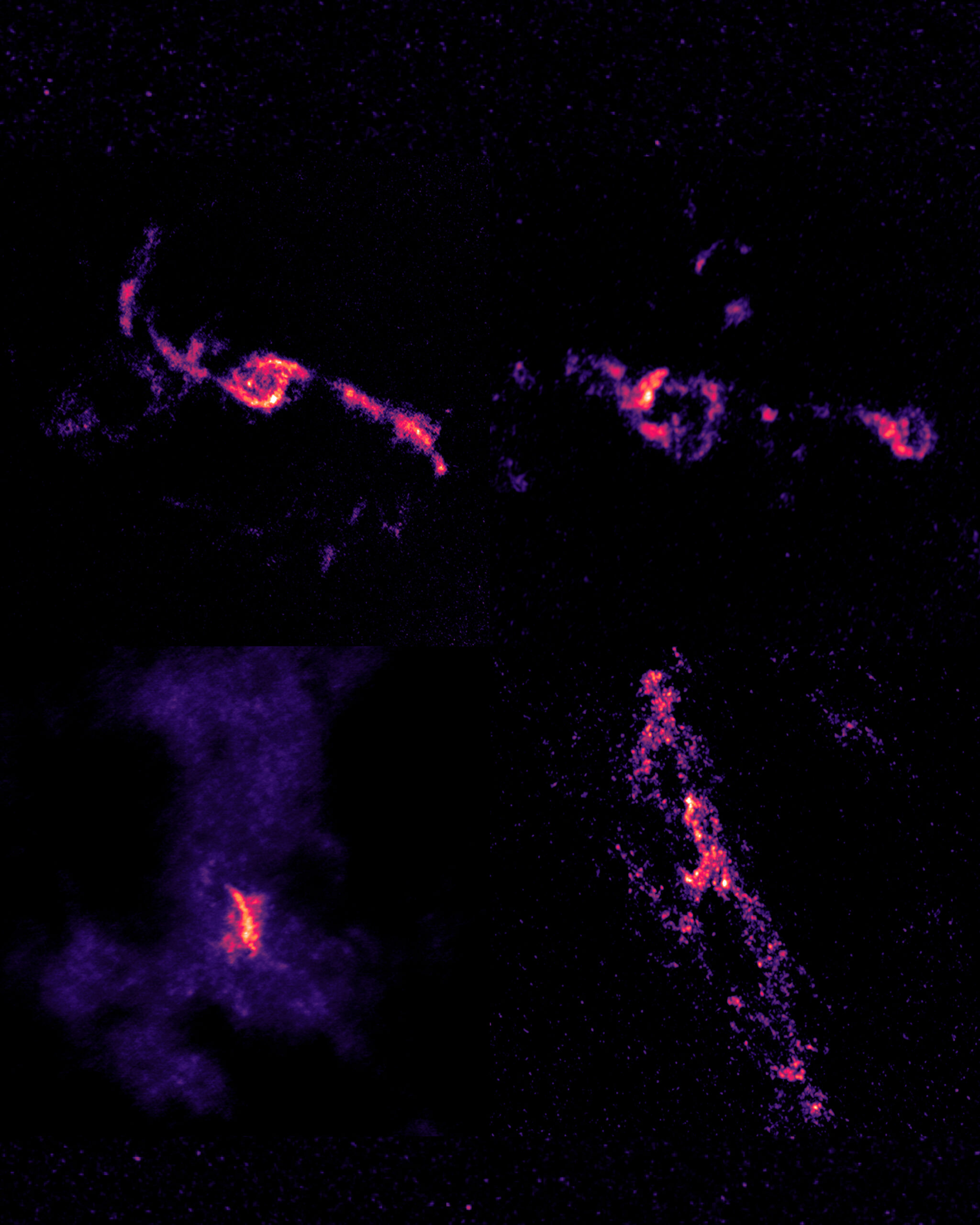 Publicado el: 22/12/2025International study reveals that black holes feed selectively
Publicado el: 22/12/2025International study reveals that black holes feed selectively -
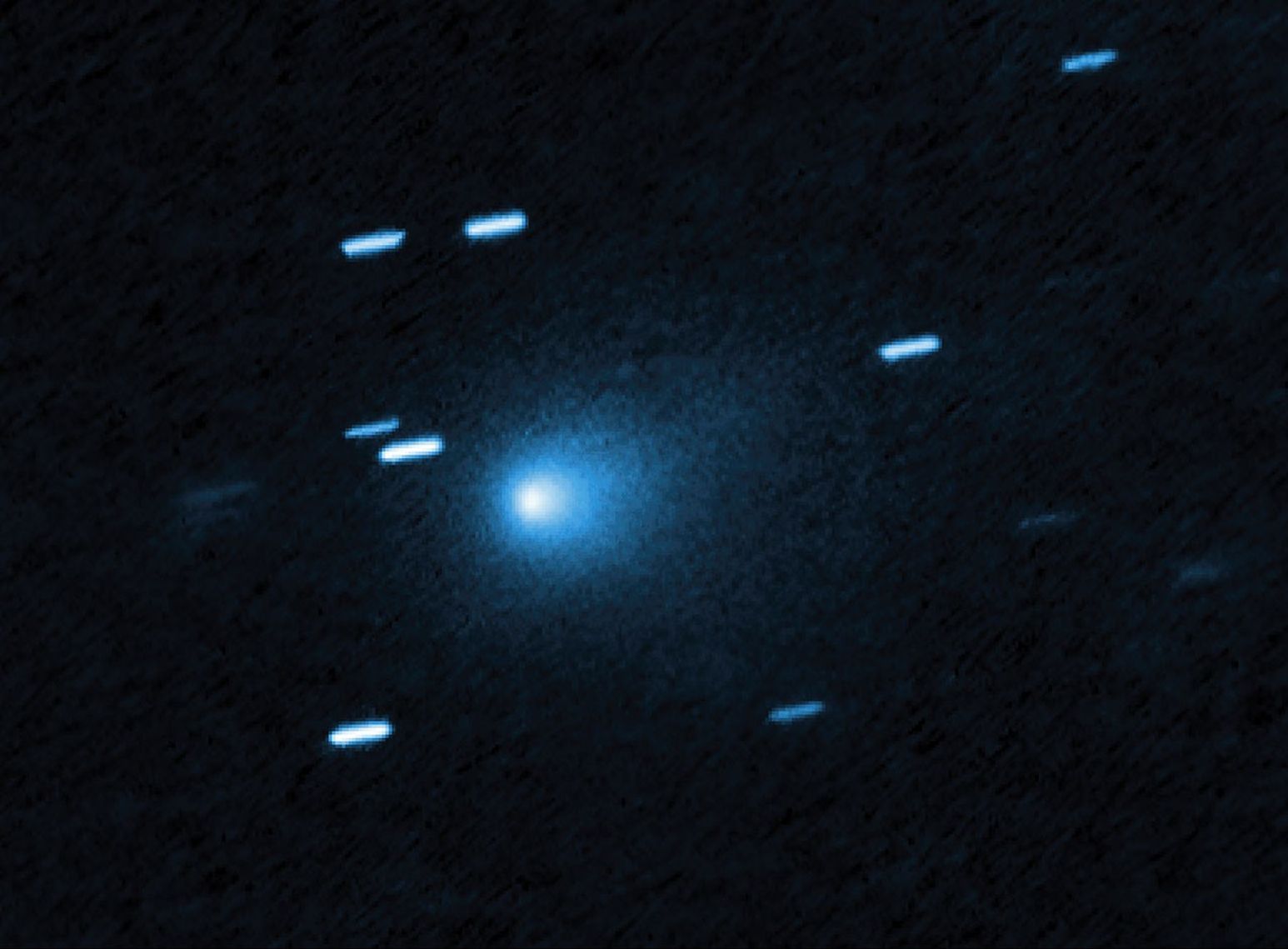 Publicado el: 20/12/20253I/ATLAS: the interstellar comet approaching Earth and what is known about it
Publicado el: 20/12/20253I/ATLAS: the interstellar comet approaching Earth and what is known about it -
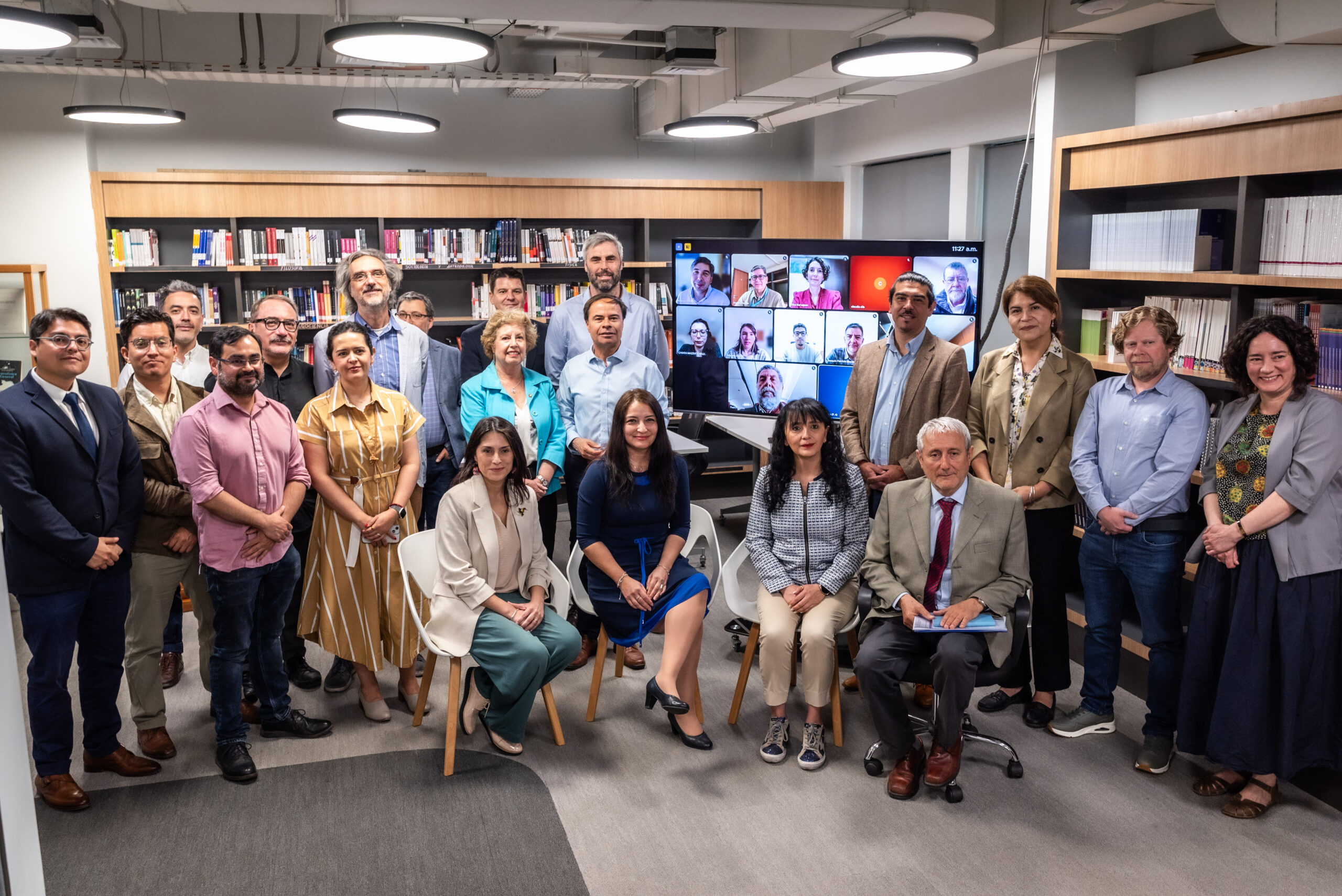 Publicado el: 18/12/2025Ministerial Advisory Committee for Astronomical Observation submits its final report
Publicado el: 18/12/2025Ministerial Advisory Committee for Astronomical Observation submits its final report -
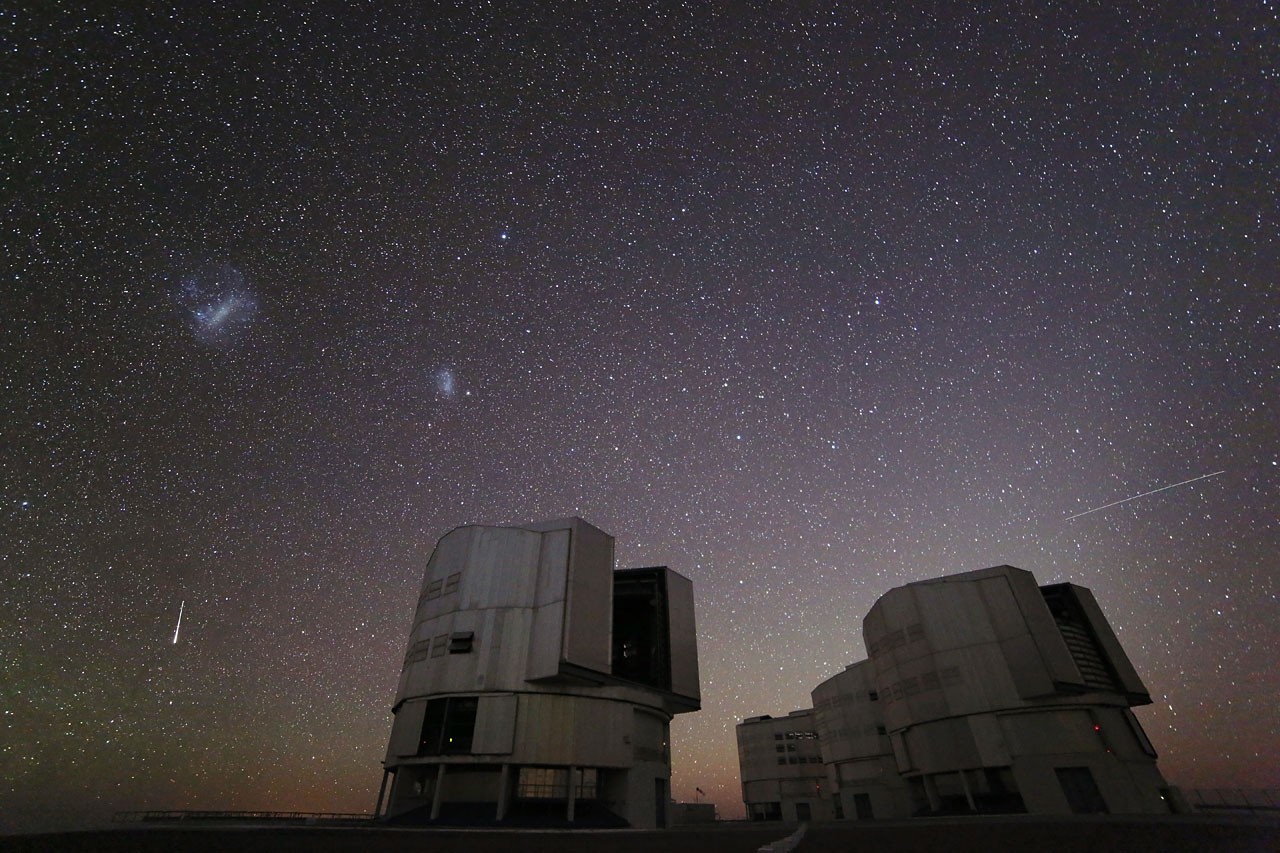 Publicado el: 13/12/2025Geminids 2025: facts and how to observe the last meteor shower of the year
Publicado el: 13/12/2025Geminids 2025: facts and how to observe the last meteor shower of the year -
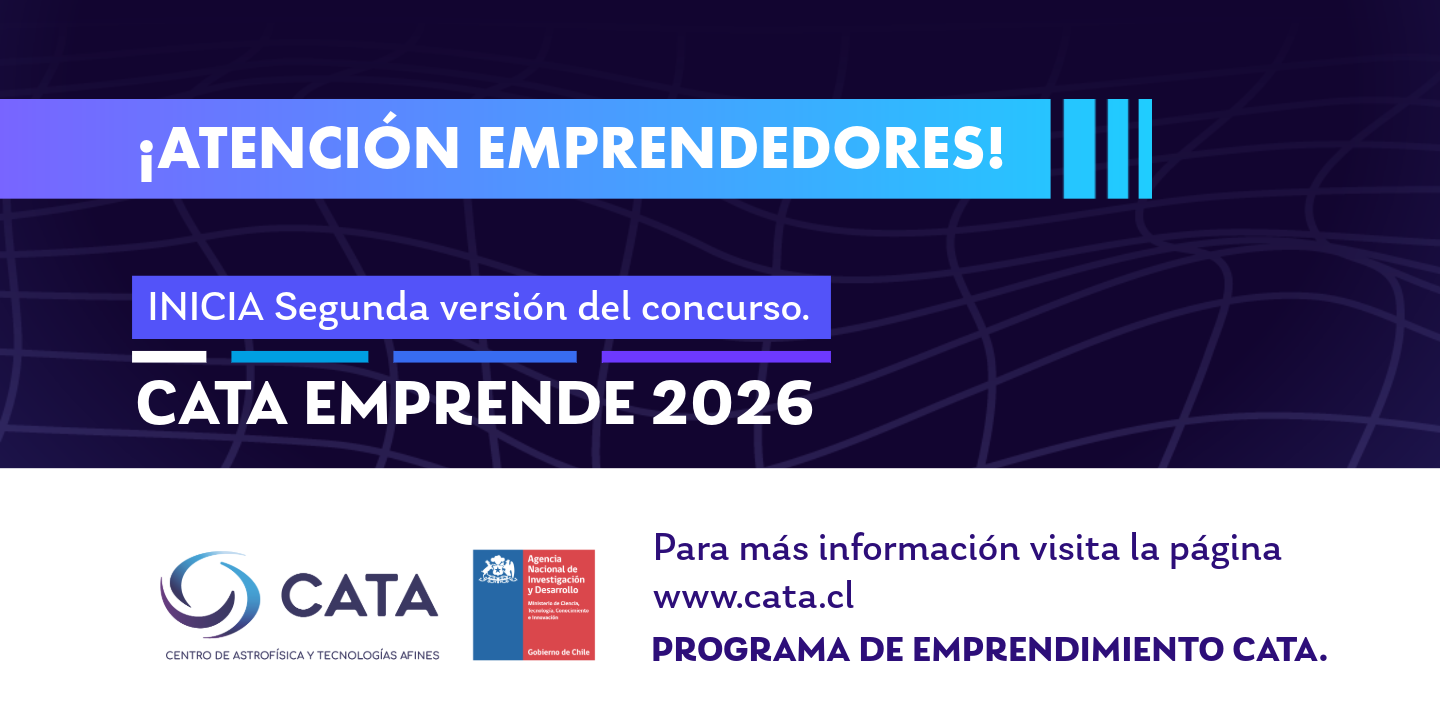 Publicado el: 12/12/2025Call for applications for the CATA Emprende 2026 program now open
Publicado el: 12/12/2025Call for applications for the CATA Emprende 2026 program now open
Categories list
- Acknowledgments 21
- Astrobiology 6
- AstroCluster 1
- Black holes 20
- Corporativo 58
- Cosmology 5
- Descubrimientos 23
- Disclosure 74
- Exoplanets 14
- Extension 7
- Galaxies 22
- Galaxies formation 6
- Inter y Transdisciplina 4
- Local Universe 17
- Publications 6
- Sin categorizar 34
- Solar System 23
- Stellar formation 8
- Technology 16
- Technology Transfer 18
